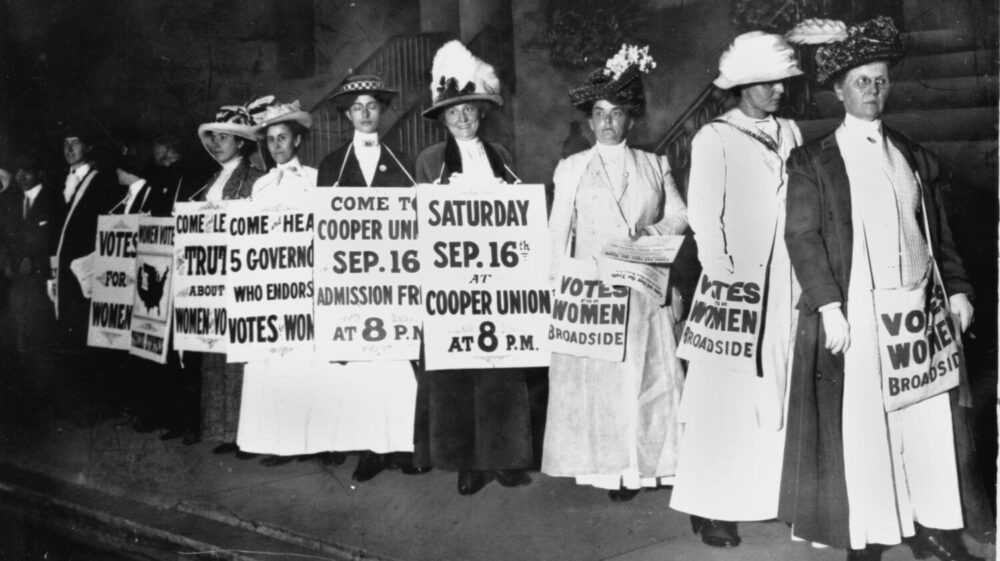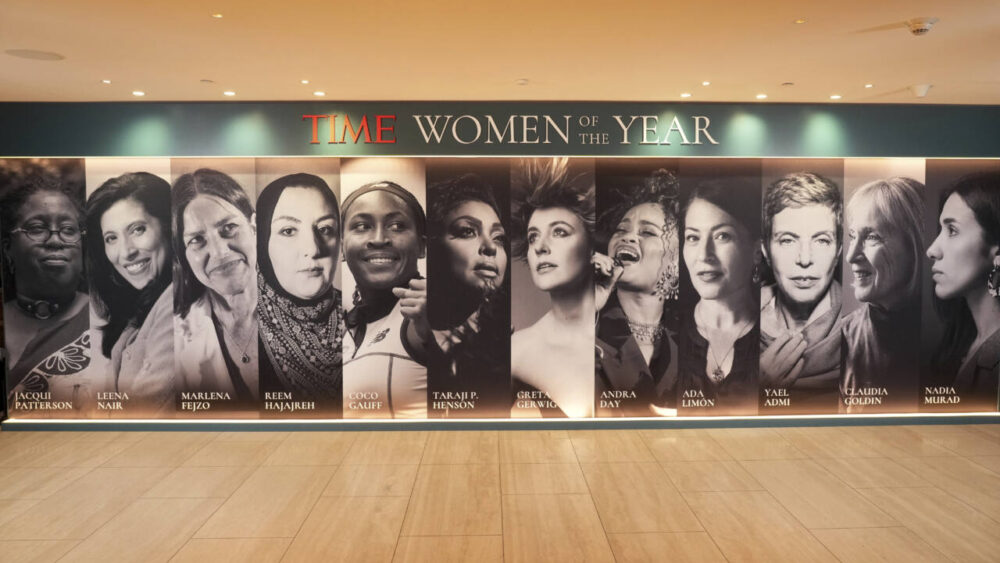Here’s the theme for this year’s Women’s History Month

As has been U.S. tradition since 1995, President Joe Biden made a proclamation in late February designating Women’s History Month, which takes place every year with the goal of celebrating the achievements of women.
“This Women’s History Month, may we recognize the long, storied history of great women helping to realize our Nation’s founding promise and highest aspirations,” he said. “May we all continue working to build a world worthy of the dreams and goals of all women and girls.”
Here’s what you should know about this annual celebration.
MORE: Why purple, green and white are the colors associated with Women’s History Month
When Is Women’s History Month?
Women’s History Month is observed in the month of March around the world. It has spread from the U.S. to many other countries, including Australia and the Philippines (although Canada celebrates in October).
Globally, International Women’s Day is celebrated on March 8. In the U.K., Mothering Sunday takes place on March 10 this year, so its version of Mother’s Day fittingly takes place during the month.
MORE: Meet the 12 women honored at Time’s Women of the Year gala
What Is Women’s History Month?
Women’s History Month is a celebration of women’s accomplishments and contributions to all aspects of society. It’s also a time to reflect on the challenges for women moving forward.
You can look for programming from museums, organizations, and institutions about women’s history this month. Nationally, the Library of Congress, the National Park Service, and the Smithsonian Institution are among the groups offering Women’s History Month content this year. However, you’ll find many schools, cities, and companies recognizing women’s achievements in their own ways, from creating lists of notable, overlooked pioneers to putting on community events.
When Was Women’s History Month Created?
The origins of Women’s History Month began with the first National Women’s Day on Feb. 28, 1909, when a group of suffragists gathered in New York City to recognize the first anniversary of the International Ladies’ Garment Workers’ strike. Beginning in 1910, International Women’s Day was celebrated throughout Europe and the United States.
In 1978, a renewed interest in celebrating women was launched with the inception of Women’s History Week, created by educators in California. In 1980, President Jimmy Carter issued the first Presidential Proclamation declaring the week of March 8 as National Women’s History Week, thanks to the successful lobbying efforts of several women’s groups.
In 1987, Congress designated March as Women’s History Month with the passage of Public Law 100-9. Since then, celebrations have taken place every year on Capitol Hill, as well as across the country. In 2022, for example, the U.S. women’s soccer team was honored at a ceremony in the White House.
Why Is Women’s History Month in March?
In addition to the historical context, Women’s History Month is partially celebrated in the month of March due to the temperate weather throughout much of the country. Maryland Congresswoman Barbara Mikulski, who helped introduce the resolution to proclaim National Women’s History Week in 1981, originally suggested making the dates coincide with the anniversary of U.S. women’s suffrage in August, according to former legislative aide Susan Scanlan. She recommended March instead to avoid potentially scorching August temperatures.
“We wanted it to be marching weather,” Scanlan explained to the National Women’s History Museum.
What Is the 2024 Theme for Women’s History Month?
The National Women’s History Alliance chooses and publishes the themes every year. Past themes have included:
- “Celebrating Women Who Tell Our Stories” in 2023
- “Women Providing Healing, Promoting Hope” in 2022
- “Valiant Women of the Vote: Refusing to Be Silenced” in 2021
- “Valiant Women of the Vote” in 2020
- “Visionary Women: Champions of Peace and Nonviolence” in 2019
In 2024, the theme is “Women Who Advocate for Diversity, Equity and Inclusion.” The NWHA notes that the elimination of discrimination is an important goal, and those who work to accomplish that face a tough battle.
MORE: 10 ways to celebrate Women’s History Month
“Throughout 2024, we honor local women from the past and present who have taken the lead to show the importance of change and to establish firmer safeguards, practices and legislation reflecting these values,” the NWHA says on its website. “Following decades of discrimination, we are proud to celebrate women who work for basic inclusion, equality and fairness.”
2024 Women’s History Month Celebrations
The NWHA provides a toolkit with resources for commemorating Women’s History Month this year in accordance with the theme. The toolkit provides guidance for educators, including suggestions for how to get students, parents and the wider community involved in learning about women’s history.
The organization encourages implementing different activities to celebrate, including organizing a book club centered around influential women and checking out local libraries and historical societies for learning resources about women’s impact throughout time and around the world.
MORE: 10 TED Talks to watch for Women’s History Month
You’ll also want to check your local calendars to see what’s going on in your own community. The local library and women’s organizations are also great resources for finding events and ways to participate. Also look to local businesses and museums, or use online resources (like the NWHA’s online webinars on March 13 and 27) to jump-start your own celebration at home.









